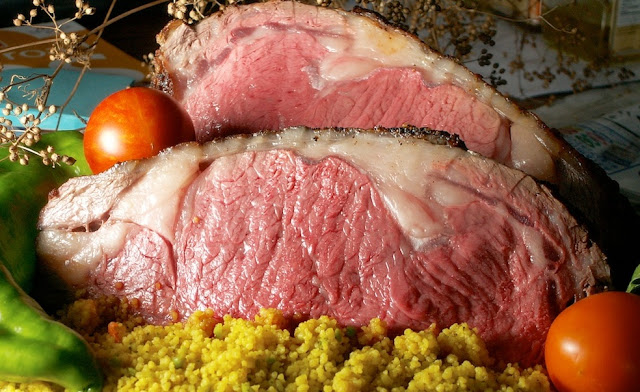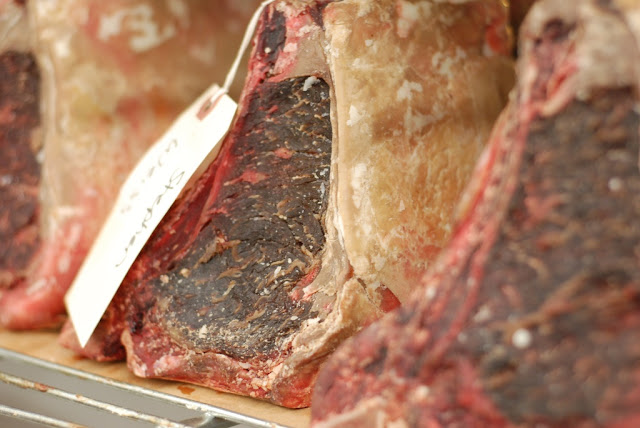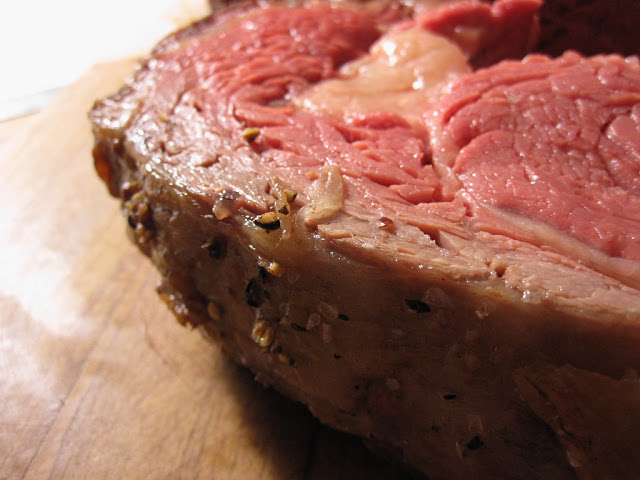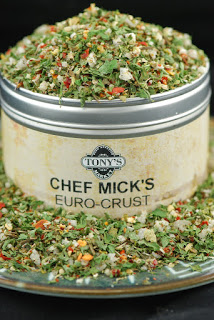The Beef Rib Roast is the most popular roast for the Christmas season, and why not!? It’s the juiciest and most flavorful of all the beef roasts – if you get a few key things right. Read on for the facts and tips for choosing and preparing the Ultimate Beef Rib Roast! (AKA Standing Rib or Prime Rib)

Start with High Grade Beef
Beef grades tell us how good the meat is likely to be – when it comes to Standing Rib there are only two grades to consider – Prime or Premium Choice. Prime Beef is the highest grade and very heavily marbled, it represents the top 2-3% of USA beef. Premium Choice (AKA Top of Choice or High Choice – the top 10-12% of USA beef) is the next highest beef designation, an industry grade that includes the most generously marbled Choice beef along with the least marbled Prime beef. At Tony’s we only offer Prime and Premium Choice beef rib roasts. Learn more about What Makes Beef Great here.
Aged Beef is More Flavorful and Tender
Aging beef is a time-honored butchery practice where sides or primal cuts of beef are stored or hung in ideal conditions for long periods or time, during which the animal’s natural enzymes improve tenderness, mature flavors and in the case of dry aging, reduces moisture levels (which help the beef cook better). Aging is an essential step for quality, but sadly it is often misrepresented. At Tony’s we age all our quality beef for 21-28 days using a combination of wet and dry aging techniques. Learn about Aged Beef here.
 |
| A whole rib dry aging in our cooler at 950 Broadway – call ahead for custom aging. |
Get The Right Cut For You
A whole Beef Rib is about 15-18 pounds, has 7 ribs and serves about 14 people. For smaller groups keep individual appetites in mind and allow approximately 1 pound per person, or about 2 persons per rib. You can request which end your cut roast comes from – the ‘Small End’ is adjacent to the loin and has the least marbling, and the ‘Large End’ is adjacent to the chuck which gives it more generous marbling – so if you like it lean, choose small end, if you like it juicy, choose large end. Personally I only choose large end roasts.
Note: Unlike most butchers we cut all our rib roasts as Rib Eyes (bone in or boneless), removing the lesser-quality lifter which makes the Large End larger – so both ends of our roasts are actually about the same size.
1) You need a high-grade, well aged roast for great results – you can’t make a cheap, low grade roast taste like a great roast.
2) An overcooked roast is a ruined roast – get a reliable meat thermometer and learn how to use it.
3) Remove your roast 10-15° below the ideal serving temperature and rest until the internal temperature stops rising before slicing.
Perfect Cooking
Personal preferences vary, but the Beef Rib Roast is at it’s most tender and juicy at about Medium Rare. The problem is, what I call medium rare, you might call rare or medium; so it’s much better to use a meat thermometer and cook to a specific temperature, and then remove from the oven, cover and rest while carryover cooking finishes the roast (rising another 10-15 degrees).
A meat thermometer is the only way to get consistent results! They’re inexpensive and easy to use – get tips on choosing and using meat thermometers here.
 |
| Photo from TheDeliciousLife |
The Ultimate Standing Rib Roast Recipe
1 high-grade, well-aged Rib Roast, 5-7 ribs (from the large end if cut)
4 TBS Tony’s Euro-Crust, Z Blend or Tuscan Grill Rub
 |
| Encrust with my EuroCrust, Tuscan or Z Blend Rub |
4-6 large cloves fresh garlic, crushed
4 TBS olive oil
Serving Sauces – options follow
Unwrap roast, cut strings, remove and discard. Remove basting fat and reserve. Rest roast at cool room temperature for 90 minutes. Preheat oven to 350 degrees.
Blot roast to remove any excess moisture. Combine seasonings with crushed garlic and olive oil to make a paste and rub evenly over roast. If a heavier seasoning crust is desired, sprinkle with even more seasonings. Place roast, ribs side down, in a roasting pan, preferably on a rack over a bed of chopped mirepoix (carrots, onions and celery, to improve gravy). For a conventional roast, lay basting fat over the roast; for a more encrusted roast, discard fat and cook uncovered.
Roast in the center of a preheated 350 degree oven for about 90 minutes, and then begin testing internal temperature. When the roast reaches 115-120°, leave the thermometer in place, remove from the oven to a serving platter or cutting board that can capture the drippings and tent with foil and a kitchen towel (leaving thermometer readout exposed). Rest until the internal temperature stops rising, about 15-30 minutes. Slice and serve.
Meanwhile, the drippings can be used to make gravy, as long as your pan is not scorched or burned. Drain the fat from your roasting pan, but leave mirepoix. Place your roasting pan on top of the stove over medium heat, add 1 cup of red wine and scrape with a wooden spoon to deglaze pan. Add about 1 cup of low sodium beef stock (or water) and cook to reduce to taste, usually by about half. Other great additions include fresh rosemary, thyme and/or sage; shallots; peppercorns; juniper berries, or substitute wine with Port, Marsala, Madeira, etc. – Chef Mick (Michaelangelo) Rosacci
Other Recipes
Rosemary Garlic Standing Rib Roast
Salt Crusted Standing Rib Roast
|
| Slicing Tips Rest roast completely. Remove any strings or basting fat. For a bone in roast; cut slices close to the rib bones and in between the rib bones – or remove the bones and slice from end to end, separate bones from one another and display with boneless slices. |
 |
| Christian Potier Sauces are amazing! |
Sauce Options
Here are some great sauces to serve with your roast – all available at Tony’s Markets
1) Tony’s Homemade Sauces: Beef Gravy, Bordelaise, Sauce au Poivre, Mushroom Sauce, Green Peppercorn Sauce, Au Jus, or Horseradish Cream Sauce.
2) More Than Gourmet Red Wine Reduction Sauce (great as is, or can also be enhanced with a host of other ingredients)
3) Sweet Finishes: Lingonberries, fruit chutney, Aceto Balsamico di Modena or preserves like Primo Blueberry Jalapeno Jam, Fig Jam, Onion Jam, etc.
Videos
Below find a video I did a few years back that will take you step by step through the process. Also an interesting video from food scientist Alton Brown where he suggestsa new cooking method I have never seen before.
Comments are closed.

